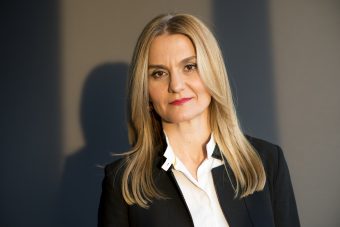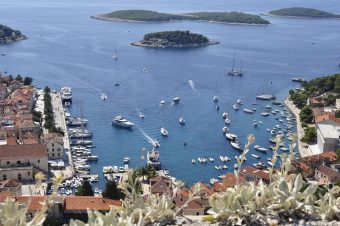
Sunny Days is a conference recently held on the Hvar island in Croatia as the first conference dedicated to solar energy usage, so we used this opportunity to talk to Maja Pokrovac, Director of Renewable Energy Sources of Croatia (OIEH) about the experience our neighbors have had in the area of solar energy, as well as in energy transition flows in the entire region
As the sunniest Croatian island, Hvar was the ideal location for Sunny Days, the first conference on solar energy usage, recently organized by the Renewable Energy Sources of Croatia association (OIEH), in cooperation with the Island Movement. By choosing the city of Hvar on the same island, the organizers wanted to additionally highlight the natural potentials the Sun in Croatia has, as well as the insufficiently used potential of islands in terms of the energy transition. The event gathered key energy transition participants from Croatia and abroad, and immediately after this two-day event, we got questions about the date of the next conference. This tells us a lot about the conference’s success, says Maja Pokrovac, OIEH Director, in her interview for the Energy Portal.
“The conclusions of the conference are very clear and important: we must change and simplify the regulatory environment, make capital availability easier, work harder on educating the broader public, strengthen the engagement of local self-government units and the citizens and enable everyone to participate in projects related to renewable energy sources. The energy transition is not going to be possible without the active participation of local and regional self-government units, nor the end-users of energy, such as the citizens, sole-proprietors, and small and medium-sized companies,” Maja Pokrovac says and points out that their biggest wish is for Sunny Days to become another traditional conference, such as Windy Days. “I hope that in the next conference we will no longer have to talk about unused potentials and obstacles, but to brag about the projects we will have launched,” she adds.
In focus:
When it comes to projects in the solar energy domain that have been launched so far, Croatia is certainly in a period of growth, above all in terms of a growing number of solar roofs in recent years. The number of citizens and companies recognizing the benefits of solar energy is on the rise as well but, as our guest noticed, it is still small with regard to the potential Croatia has. According to HEP-ODS data, in 2020 there have been 27 MW of solar capacity installed in Croatia, whereas cumulatively the number is 108 MW in total. The goal is to reach 134 MW in 2021 and to grow each year up to 6,570 MW of yearly new installations by 2030, out of which 768 MW is to come from the installed solar power in total.

“If we are to ease access to commercialization of the potentials, not only will we achieve our ambitions, but also exceed them, because the potential is higher than the goals set for the following decade. This could be seen in Walburga Hemetsberger’s presentation at the Sunny Days conference. She is the Director of Solar Power Europe, an association from the EU. We have not reached the giga-watt market but, speaking of the Croatian market, she specified that the growth of solar power is expected to rise by 226 percent this year so that the installed power is to increase by 871 MW by 2025, which is an 850 percent growth in comparison to today’s total capacity,” Maja Pokrovac says.
There are a lot of developing solar power plants currently in Serbia, both small and big, and those developed by private individuals, companies, and state institutions. For example, Podravka company is building solar power plants on the roofs of its buildings, the Croatian Electric Power company also started to intensify the development of solar power plants in Croatian islands, among other things. “Domestic and foreign investors are really interested in RES development projects, so we currently have more than 10 GW of projects that are candidates for connecting to the transmission network, mostly by solar FN power plants, wind farms, and hybrid power plants. The RES sector is developing rapidly,” our interlocutor notices.
Due to its geographic position, Croatia has a great solar energy usage potential, which is among the biggest in Europe. However, if we compare the Dalmatia region with the neighboring Slovenia, the former’s solar potential is 40 percent greater than the Slovene, but its installed solar power is 10 times smaller than the latter one’s.
“With the new legal framework for the green transition, that is to enable a stronger solar energy breakthrough, this should start changing. In regard to the novelties, the Law on Electricity Market brings, which is adopted only a few days ago – from putting solar panels on multistory buildings, all the way to the possibility for the citizens to unite into energy communities and share energy through them – I am sure the solarization of Croatia is going to speed up,” Maja Pokrovac says.
Prepared by: Nevena Đukić
Read the story in the new issue of the Energy portal Magazine RECYCLING.
Translator Vesna Savić



